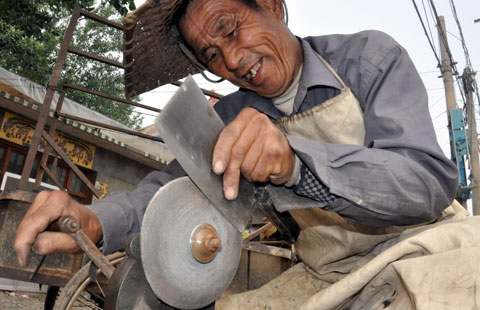China publishes record of wartime losses
By Liu Zhihua ( China Daily ) Updated: 2014-10-15 08:53:32China has begun to publish national survey findings of the population and property loss during the War of Resistance against Japanese Aggression (1937-45).
The Party History Research Center of the Communist Party of China Central Committee announced in late September it has successfully conducted a 10-year national survey to document such losses during the war, which involved 600,000 participants and resulted in a series of books that the Party History Publishing House of CPC has recently started to publish.
The war broke out in 1937 and ended on Aug 15, 1945, with Japan's unconditional surrender, which also effectively ended World War II.
As China was the major battlefield in the East during the war, its people paid a heavy price fighting the Japanese invaders.
The survey findings recorded details of the Chinese people's suffering and loss during the period and revealed the crimes of the Japanese military, according to Li Zhongjie, deputy chief of the research center, who headed the project.
The survey was started in October 2004.
The center organized the Party history research facilities at provincial and city levels, assisted by related government departments, to collect documents and review literature, identify and interview war survivors, witnesses and historians, and then document and certify their narrations and testimonies.
Researchers often went to counties and villages to get new and detailed information.
In Shandong province, for example, researchers went to 95 percent of all the villages and talked to 80 percent of people older than 70-those born before the war ended-and collected more than 790,000 testimonies.
Taiwan was very supportive of the project, welcoming researchers from the mainland to look into files and documents it has kept.
When it came to major events or subjects, such as germ warfare and "comfort women"-females forced into sex slavery by the occupational Japanese troops-the center invited historians and experts with related expertise to conduct thematic research not only in China, but also in the United States, Japan and Russia, among other places.
|
|
|
|
|
|
|
|






















 Raymond Zhou:
Raymond Zhou: Pauline D Loh:
Pauline D Loh: Hot Pot
Hot Pot Eco China
Eco China China Dream
China Dream China Face
China Face





